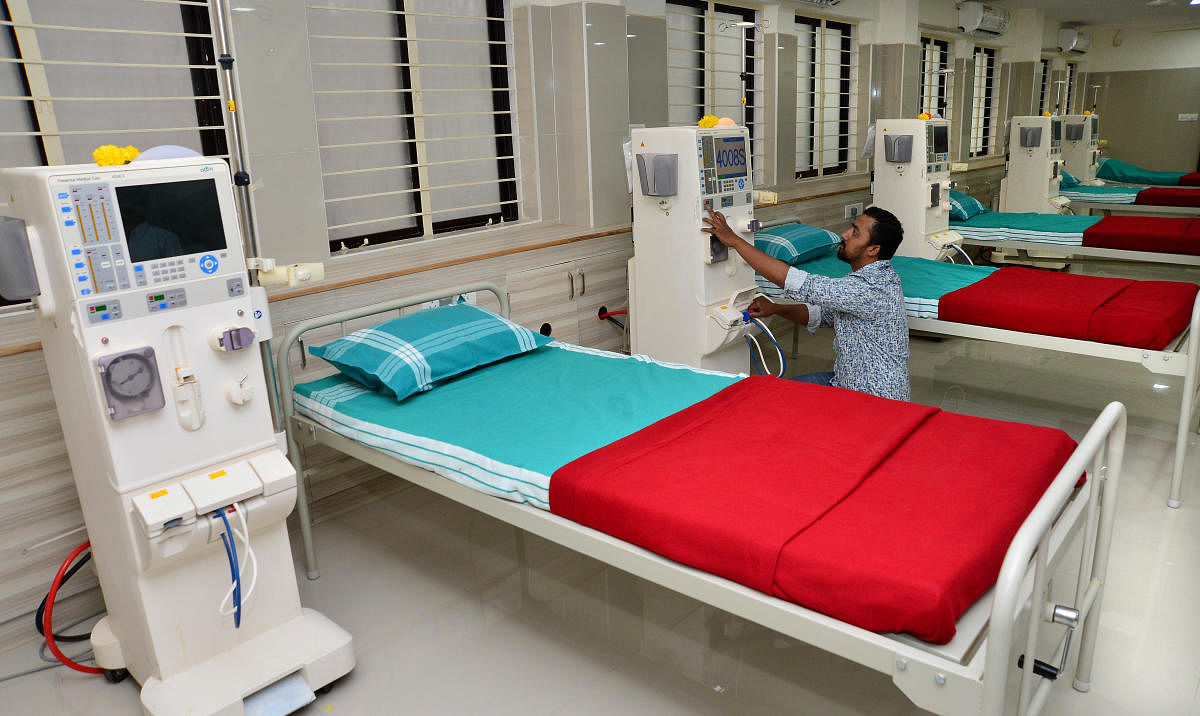
The health department is coming up with 51 new dialysis centres in Karnataka, under Pradhan Mantri National Dialysis Programme (PMNDP) and three of them will be in Mysuru district.
Two of the centres will be in taluk hospitals - Saragur and Saligrama - and one at the new district hospital on KRS Road in Mysuru, said Health Commissioner D Randeep.
National Health Mission state director Dr Naveen Bhat said the new dialysis centres are coming up in 46 new taluks, including two in Mysuru district, three major hospitals and two specialty hospitals in Bengaluru.
At present, there are 168 dialysis centres in Karnataka under PMNDP, including 146 in taluk hospitals and 22 in district hospitals.
A fresh tender has been floated to find an agency to manage all 219 government dialysis centres run under PMNDP in Karnataka, Randeep said.
Now, there will be dialysis centres in six district hospitals and 49 taluk hospitals in Mysuru division.
In Bengaluru division, they will be in six district hospitals, 46 taluk hospitals apart from three major hospitals and two specialty hospitals.
In Belagavi division, the centres will be in six district hospitals and 56 taluk hospitals.
In Kalaburagi division, they will be in four district hospitals and 41 taluk hospitals, said Dr Srinivas Gulur, deputy director of the health department.
In Karnataka, there are 649 dialysis machines and treats 4,317 patients, with 1,600 to 1,900 cycles per day, Gulur said.
Except for hospitals attached to medical colleges, no other government hospital in the state has sanctioned posts of nephrologists. Each dialysis centre in the taluk hospitals is handled by a technician and a staff nurse in each shift. As per new conditions, the service provider must hire a nephrologist for each district with a dialysis centre. He or she will visit all taluk centres in rotation or be available on call or video conference to take care of patients.
"The idea of the government to have more dialysis units is welcome. Each unit should be managed by a specialist holding MD degree, with special training in nephrology or DM or DNB in nephrology, a dietician, technician, nurses, attendants and a medical social worker. If dialysis is done without care, quality and adequate supervision by an expert, it can adversely affect the patient," said nephrologist Dr Sudarshan Ballal.
He said the incidence of kidney diseases has gone up by 10% to 15% compared to a decade ago.
"This is due to delayed diagnosis, increased prevalence of diabetes and poor management of diabetes and hypertension. At present, 17% of Indians suffer from some form of kidney disease and less than 1% from severe kidney disease who require dialysis. Every year 1.5 lakh to 2 lakh patients require kidney transplant or long-term maintenance dialysis," Ballal said.